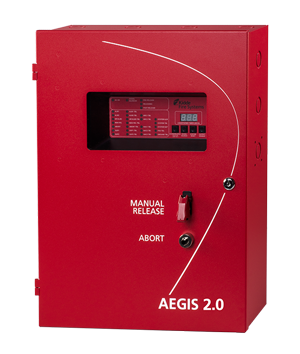This manual is intended to clearly and accurately describe the installation, operation and maintenance of the ARIES Fire Alarm/Suppression Control Unit. Kidde-Fenwal assumes no responsibility for the application of any systems other than those addressed in this manual. Kidde High-Pressure CO2 Fire Suppression System. The Kidde carbon dioxide fire suppression system is an engineered system available in three application configurations: Total flooding (for unoccupied areas) Local application; Hand-hose line; The Kidde CO2 fire suppression system includes: A detector; A control unit; Agent storage cylinders; Piping. This manual, in no way, supercedes the Kidde Engineered Fire Suppression System designed for use with 3M™ Novec™ 1230 Fire Protection Fluid Design, Installation, Operation and Maintenance Manual, P/N 45-N1230M-001. Kidde-Fenwal assumes no responsibility for the application of any systems other than those addressed in this manual.

Since 1917, Kidde Fire Systems has been a global leader in fire protection, protecting people, property, and processes from fire hazards. Our fire protection solutions include conventional & intelligent detection and control systems which complement a complete line of fire suppression systems. Located in over 80 countries worldwide, our highly skilled Authorized Distributor network designs. Your Kidde Smoke Alarm was designed specifically for use in a residential environment. It is not designed for use in a recreational vehicle (RV) or boat. P/N: 0311-7201 RevA For your convenience, write down the following information. If you call Product Support, these are the first questions you will be asked. Smoke Alarm Model Number.
Marine High Pressure CO2 Systems
Sotec supplies USCG-approved marine high-pressure carbon-dioxide (CO2) suppression systems which are typically installed to protect engine rooms, pump rooms, incinerator rooms, generator rooms, cargo holds and paint lockers and other small storage areas from fire.
Kidde Co2 System Manual Instruction

All of the systems are manually-operated from either a remote station (away from the cylinder storage area) or at the local station (beside the storage cylinders).
There are three basic design types. The first type includes small systems (less than three hundred pounds of CO2) usually used for paint lockers or other small unmanned areas. A second type consists of a single bank of cylinders protecting a single area, and the third type is a single bank of cylinders protecting multiple areas.
The banked systems employ a remote actuation station, a local station, a stop (selector) valve, lock-out valve, odorizer and a timer to delay the stop valve opening. These systems operate on a two-stage principle. The first stage activates all of the cylinders in the bank and fills the manifold up to the stop valve. The second stage allows CO2 to flow into the timer and subsequently actuate the stop valve which in turn releases CO2 into the protected area.
Kidde Co2 System Manual System
The multi-zone systems employ a stop valve specific to each zone protected and may also employ controlled release of cylinders, via non-return valves in the actuator line, to discharge an appropriate quantity of gas into the proper area.
Kidde Co2 System Manual Instructions
Manufacturers such as Ansul and Kidde provide marine systems such as those described above.